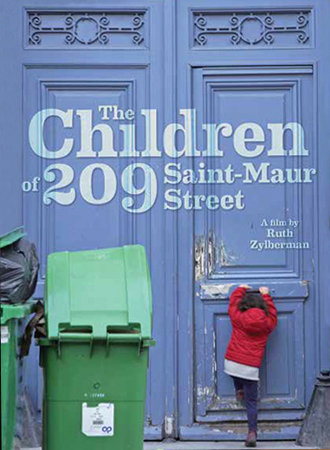
The Children of 209 Saint-Maur Street 2020
Distributed by Icarus Films, 32 Court St., 21st Floor, Brooklyn, NY 11201; 800-876-1710
Produced by Céline Nusse and Paul Rozenberg
Directed by Ruth Zulberman
Streaming, 100 mins
College - General Adult
Family Relations; Jewish Holocaust; World War II
Date Entered: 01/14/2021
Reviewed by Rachael Dreyer, Head of Research Services for Special Collections, Pennsylvania State UniversityThis documentary opens slowly, like a leisurely walk down the Parisian street where the film focuses its narration. It’s a bit scattered at first, as the filmmaker Ruth Zylberman reconstructs the neighborhood. Using the 1936 census as a starting point, she seeks out all the families who once lived at a particular apartment complex--209 Rue Saint-Maur--during the years leading up to World War II. She focuses on the Jewish families who lived ordinary working lives until the Nazi occupation. Zylberman sets the scene: a vibrant apartment complex, comprised of three connected buildings, looking down on a communal courtyard. Many families intended to stop over for a brief time on their way to other places; some lived at 209 for years. Everyone knew one another. Most units had no running water and no ensuite bathrooms, so queuing for the toilets enhanced the communal atmosphere. On the street level, residents of 209 Rue Saint-Maur operated a cafe and a grocery store where their neighbors shopped.
When France was occupied by Nazi forces, things changed for the residents and families living at 209. Since many living at 209 were Jewish, the film’s interviewees recount how they were forced to wear the yellow Star of David and to carry identification papers. The cafe owner and grocer were forced to sell their businesses at a huge loss. And then the roundups came. The interview subjects recount the terror of hiding from police officers, of being separated from their parents and siblings, of trying to survive the death camps. Zylberman painstaking recreates these events with documentation gathered through primary source research: she finds arrest, deportation, and concentration camp intake records. As the survivors narrate the horrors they lived through, Zylberman’s inclusion of official documents underscores the sheer inhumanity of the Nazi and Vichy government’s actions towards its own citizens.
Viewers may struggle to follow the thread at first, but the relationships between the individuals who are interviewed quickly illustrates the depth of the connections between the neighbors within this heavily Jewish, heavily Eastern European housing complex. However, the film is as much about the absences as it is about what it includes: the disappeared fathers, mothers, siblings, uncles, aunts, friends, and neighbors who were forcibly taken from their homes and sent to death camps. None of the parents of the people who were interviewed survived the camps.
It is particularly affecting as one survivor describes watching SS soldiers throw children onto cattle cars, describing the family separations that took place at the train depots--mothers and infants separated, brothers and sisters sent to different camps: they were never reunited. It’s poignant and deeply disturbing because it is such a prescient image of the family separations wreaking havoc on the families seeking asylum on the U.S.-Mexico border. The final scene of the film offers hope in the form of a reunion of sorts: the survivors reunite at 209, many of them bringing their own children.
Zylberman’s film adeptly moves between archival research and interviewees’ recollections, pairing the official record with deeply personal and extremely gut-wrenching stories of loss and grief. While the content is suitable for older secondary audiences, college-age and adult audiences are better able to follow the multiple interviewees’ distinct stories, and to appreciate the effort Zylberman takes to establish the tone and layered approach of the film.
Published and licensed under the Creative Commons Attribution 4.0 license. Anyone can use these reviews, so long as they comply with the terms of the license.